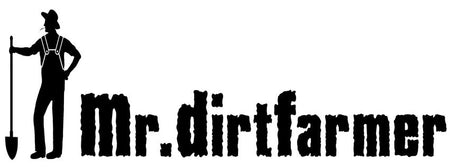Wood Ash As A Fungicide and Insecticide
Bud rot attacks your best flowering buds and one of the things that makes bud rot tricky to treat is the fact that it’s internal and systemic.
Bud rot on onions, radishes, potatoes, strawberries, or flowering plants including cannabis is one of the more notorious ruining molds, because you don’t realize it until the plant is basically dying. It’s very common, especially outdoors, when you have less control of the grow space. If it gets into one plant, watering systems or root beds, other plants can get the same infection. It can also passively spread in the air.
A garden’s susceptibility to disease is often traceable to environmental conditions such as temperature, moisture, light, airflow, pH, and nutrients. Fungus grows when it finds the right moisture level, temperature, acidic conditions, and a reliable source of food.
Bud Rot Symptoms
- Yellowing leaves
- Mold white and fluffy or dark gray/brown
- Darkened discolored colas
- Buds drying up
Here are the 4 major factors that affect your susceptibility to bud rot.
- Temperature The ideal temperature recommended for your grow varies depending on several factors, but keep in mind that bud rot prefers cooler temperatures. Most experts recommend temperatures above 68°F.
- Acidic Conditions If you grow indoors, it’s much easier to avoid Botrytis spores. Outdoor growers simply have had to find the right strain with the best resistance and bud characteristics.
- Humidity Again, for indoor growers, limiting humidity is one of the easiest ways to avoid problems with bud rot. Outdoor growers who cannot change these variables need some extra tools
- Food Source (Your Buds) Remember that bud rot likes the parts of your plants that have the most moisture, so you’ll need to keep an eye on your denser colas. Of course, if you see infection remove it immediately and don’t let the infected parts of your plants touch those that haven’t been affected.
Mr. Dirtfarmer’s finely sifted hardwood ash attacks the Botrytis problem by raising your pH levels (removing the acidic condition) and discouraging bud rot in a natural organic way. You are using burned wood ash here. No chemicals -nothing. You could even use this before a harvest.
Hardwood ash acts as a pH adjustment agent, natural fungicide, and insecticide to help protect your garden from diseases and pests.
Using a solution of 2-6 teaspoons of ash + 1-2 drops of basic plain dish soap mixed with 1 quart/liter of warm water is useful to spray vegetable and ornamental crops. The combination of ash and soap helps to successfully combat gray mold (bud rot), powdery mildew, and aphids.
Spreading a light layer of plain sifted ash around plants creates a deterrent obstacle for slugs, snails, ants, aphids and other insects.
Due to ash’s high alkalinity it neutralizes excess soil acidity. It is useful on acidic podzolic clay, forest, and peat-bog based soils. The application rate depends on the level of soil acidity, content of soil organic matter, and whether it is heavy or light. On clay and peat soils it is added in large quantities.
Remember, a little goes a long way.
Storage – Keep It Dry.
Mrdirtfarmer.com

I have purchased this for my chickens dust bath. I have added two bags of playsand how much wood ash should I add?